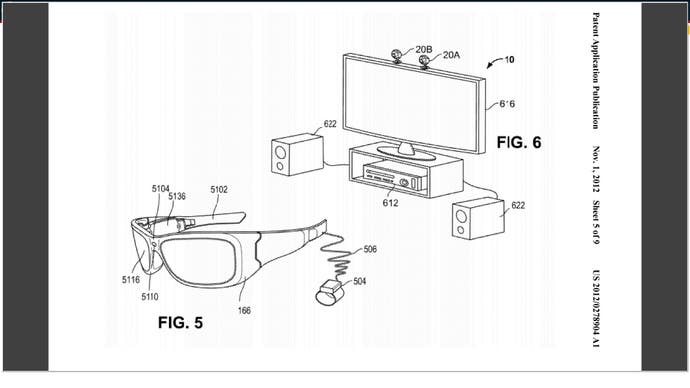Kinect could police who watches films at home
Content stops if unlicensed viewers are detected.
Imagine a world where Microsoft technology watches you watching a film, all the time policing that only the people licensed to watch the film are present.
Happens that Microsoft imagined, and patented, the same thing. The patent is titled "Content Distribution Regulation by Viewing User".
"The technology, briefly described, is a content presentation system and method allowing content providers to regulate the presentation of content on a per-user-view basis," the patent, filed April 2011 and published 1st November, described.
"Content is distributed to consuming devices, such as televisions, set-top boxes and digital displays, with an associated license option on the number of individual consumers or viewers allowed to consume the content. The limitation may comprise a number of user views, a number of user views over time, a number of simultaneous user views, views tied to user identities, views limited to user age or any variation or combination thereof, all tied to the number of actual content consumers allowed to view the content.
"Consumers are presented with a content selection and a choice of licenses allowing consumption of the content ... The users consuming the content on a display device are monitored so that if the number of user-views licensed is exceeded, remedial action may be taken."

If you don't take remedial action, such as buying another license for an extra person, the film or piece of content you're watching stops playing. (It sounds like there's a grace period to ignore people walking in and out of the room and not actually sitting down to watch the film.)
This patent isn't specifically tied to Kinect, more to the entire process of licensing content to viewers and monitoring them - even on mobile devices using their built-in camera.
But there was a paragraph about a gaming console (612) and its associated telly-top camera (620).
"Environment 612, with capture device 620, may be used to recognise, analyse, and/or track human (and other types of) targets," that patent declared.
"For example, a user within the display area of the display 616 [the television] may be tracked using the capture device 620 such that the gestures and/or movements of the user may be captured to determine the number of people present, whether users are viewing content and/or may be interpreted as controls that may be used to affect the application being executed by computing environment 612.
"Such information may also be used to determine whether the tracked user is viewing content presented by a content provider."

These days you could simply unplug Kinect to circumvent this. But what if Kinect was built into the Xbox hardware? You could block the camera's field of vision, but what if that triggered a defence system to automatically stop a film from playing?
Also, why is Microsoft interested in this? Could it be that Microsoft envisaged a future of simultaneous cinematic and Xbox Live releases of films? This would be one way of policing living-room ticket sales. But it's a long shot to say the least.









